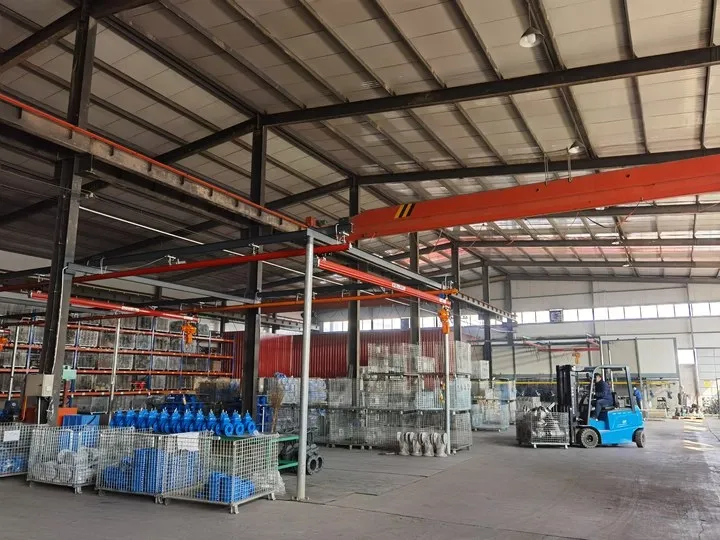6 inch flanged ball valve
Understanding the 6 Inch Flanged Ball Valve A Comprehensive Overview
In the realm of industrial fluid control, valves play a crucial role in managing the flow of liquids and gases. Among the various types of valves used in piping systems, the flanged ball valve stands out for its reliability and efficiency. Specifically, the 6-inch flanged ball valve has garnered attention for its size and functional capabilities, making it a popular choice in several applications, including water treatment, oil and gas, and chemical processing.
What is a Flanged Ball Valve?
A flanged ball valve is a type of quarter-turn valve that utilizes a spherical disc to control the flow of fluid through it. The ball has a hole or port through the center, allowing fluid to flow through when the valve is in the open position. Conversely, when the valve is closed, the ball rotates 90 degrees, sealing off the flow. The term flanged refers to the protruded rim or lip on either side of the valve, which facilitates a bolted connection to piping systems, ensuring a secure and leak-proof fit.
Key Features of 6 Inch Flanged Ball Valves
1. Size and Capacity The 6-inch diameter of these valves makes them suitable for medium to large-scale applications. They can handle significant volumes of fluid, making them ideal for industries that require robust flow control.
2. Material Construction Flanged ball valves are available in various materials, including stainless steel, brass, and PVC. The choice of material often depends on the type of fluid being handled and the operating conditions, such as pressure and temperature.
3. Durability and Maintenance These valves are designed to withstand harsh conditions and are known for their longevity. The ball and seat are typically made from materials that can resist wear and tears, minimizing maintenance requirements.
4. Ease of Operation The quarter-turn design allows for quick and straightforward opening and closing, enabling rapid response to system demands. Operators can achieve full flow within just a quarter turn, increasing operational efficiency.
5. Versatility 6-inch flanged ball valves can handle various types of fluids, including water, oil, gas, and chemical substances. This versatility makes them suitable for numerous applications across multiple industries.
Applications of 6 Inch Flanged Ball Valves
6 inch flanged ball valve

Due to their advantageous characteristics, 6-inch flanged ball valves are utilized in various applications
- Water and Wastewater Treatment They are commonly used in treatment plants to control the flow of water and sewage. Their reliable sealing capabilities ensure that the systems remain effective and efficient.
- Oil and Gas Industry These valves are integral in pipelines where they regulate the transport of crude oil and natural gas. Their robust construction allows them to withstand high pressures and corrosive environments.
- Chemical Processing In chemical plants, controlling the flow of hazardous materials is crucial. 6-inch flanged ball valves offer the safety and reliability needed in these sensitive environments.
- HVAC Systems Heating, ventilation, and air conditioning systems use these valves to manage the flow of water and refrigerants, ensuring optimal performance.
Installation Considerations
When installing a 6-inch flanged ball valve, several factors must be considered. First, the compatibility of the valve with existing piping systems must be ensured, particularly regarding flange dimensions and pressure ratings. Additionally, proper alignment during installation is crucial to prevent undue stress on the valve and ensure a tight sealing mechanism.
Moreover, it is advisable to follow manufacturer's guidelines for installation and operation to maximize the valve's lifespan and efficiency. Regular inspections and testing can help identify any potential issues early, thereby preventing costly failures.
Conclusion
The 6-inch flanged ball valve is an essential component in fluid control for a range of industries. Its reliable operation, durability, and ease of use make it a preferred choice among engineers and operators alike. With the ability to handle various fluids and adapt to different applications, these valves play a significant role in enhancing process efficiency and safety in industrial environments. Understanding their features, applications, and installation considerations can lead to optimal performance and longevity. As industries continue to evolve, the demand for such robust and efficient valves will undoubtedly remain strong, highlighting their importance in modern fluid management systems.
-
The Key to Fluid Control: Exploring the Advantages of Ball Valves in Industrial SystemsNewsJul.09,2025
-
The Versatile World of 1, 2, and 3 Piece Ball ValvesNewsJul.09,2025
-
Stainless Steel Ball Valves: The Ideal Choice for Efficient Flow ControlNewsJul.09,2025
-
Optimizing Fluid Control with Ball Float ValvesNewsJul.09,2025
-
Manual Gate Valves: Essential for Control and EfficiencyNewsJul.09,2025
-
Everything You Need to Know About Butterfly ValvesNewsJul.09,2025
-
The Versatility of Wafer Type Butterfly ValvesNewsJul.08,2025




